
Zelda Replay Part V: Ocarina of Time - Article
by Evan Norris , posted on 23 November 2021 / 3,787 ViewsWelcome to Zelda Replay, a celebration of what I consider the best video game franchise. Each article in this ongoing series will explore a specific The Legend of Zelda game — which I will replay and re-evaluate — starting with the first installment on NES and moving forward according to release date.
Note: I will cover only mainline, official titles for this project, so don't expect non-canonical entries like The Wand of Gamelon or side projects like Link's Crossbow Training. Every game will get a review and will enter into a series ranking that I’ll update with each new article. Please enjoy.
Part I | Part II | Part III | Part IV
Part V: Ocarina of Time
"I've been waiting for you, Hero of Time."
I distinctly remember waiting with great anticipation for The Legend of Zelda on Nintendo 64. I recall pouring over the 100th volume of Nintendo Power in late 1997, not only for its list of the top 100 games of all time — Super Mario 64 for the win! — but for its preview of what was called at the time simply Zelda 64. Within the article, which screams "GANON'S BACK", producer Shigeru Miyamoto explains that the game's world "is a size that would be difficult to cross in an entire game day." Three months later, in December 1997, Nintendo Power volume 103 arrived, and with it came 100 screenshots of Zelda 64, along with more insight into the mechanics, graphics, and gameplay elements of the hotly-anticipated title. At that point I was hooked.
Zelda 64, eventually unveiled as The Legend of Zelda: Ocarina of Time, was so exciting because it promised to pair the greatness of A Link to the Past with the open-ended freedom and game-changing scope of Super Mario 64. The fact that Ocarina weighed in at 256 megabits, four times the size of Super Mario 64, only made things more mind-boggling.
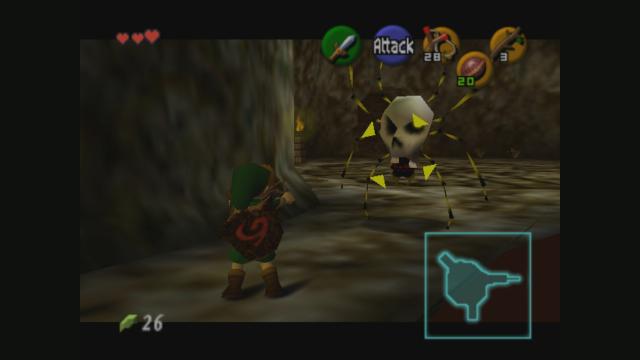
When, on November 23, 1998, Ocarina of Time finally launched in North America, it was everything I wanted — and more. I loved everything about it: the devious dungeons, the riddles, the music and sound, the immersive day-night cycle, the emotional storytelling, the visceral joy of riding on horseback, and, above all else, the freedom to explore and wander without direction. For the next 19 years, until Breath of the Wild arrived in March 2017, I considered Ocarina of Time to be the finest video game ever made.
Because of Ocarina's significance to me, I eagerly awaited revisiting it as part of this "Zelda Replay" experiment, in a way analogous to my enthusiasm throughout 1997 and 1998. This time, though, my excitement mingled with a touch of apprehension. I wondered to myself: is Ocarina, the game that defined my teenage gaming years, as legendary as I remembered it? The answer is complicated.
Like Super Mario 64 before it, Ocarina absolutely nailed the transition from 2D to 3D. Everything that is special and addictive about The Legend of Zelda formula is retained here, enhanced by things previously unknown to the franchise, including the day-night cycle, horseback riding, lock-on combat, cinematic storytelling, and, of course, the spatial freedom provided by 3D technology.
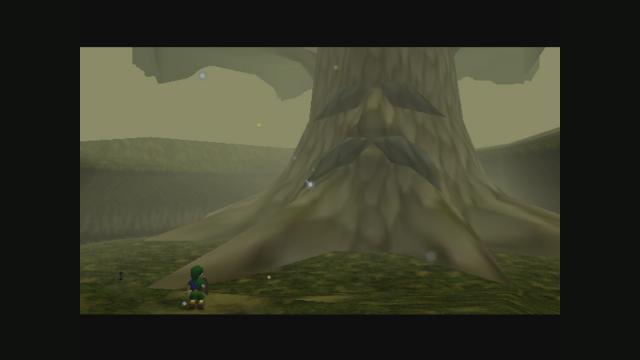
I could go on for paragraphs about all the issues inherent to the process of importing a 2D template wholesale into three dimensions, and all the elegant solutions the engineers at Nintendo deployed to mitigate those issues, but I think it would be more effective for me simply to list off the things that I found brilliant in Ocarina after 20+ years, and the things that diminished the title somewhat.
First of all, let's talk about what is maybe the most extraordinary aspect of Ocarina of Time: its soundscape. Perhaps unsurprisingly — the game is named after a musical instrument, after all — Ocarina of Time features arguably the finest music in the entire Zelda saga, if not video games in general. From its plaintive title theme, to the sunny, upbeat "Hyrule Field", to the leisurely "Lon Lon Ranch", there is remarkable creativity and diversity in the musical arrangements. Moreover, each tune is distinct and evocative; anyone who's played Ocarina will instantly be returned to the carved passageways of Goron City or the peaceful solitude of Kakariko Village simply upon hearing a few notes of their musical themes.
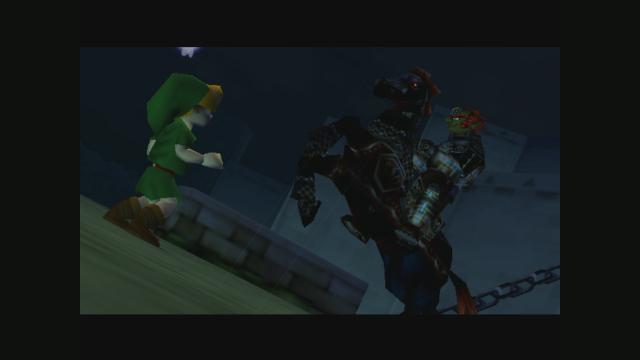
Equally impressive is the game's sound design. Much has been written about Breath of the Wild's ambient noise — and deservedly so — but in this department Ocarina is no slouch. There are so many small, but important sounds in the background during your epic adventure: the soft fluttering of Cuckoo wings; the hollow, haunted scream of the ReDead; the crickets and crows of Hyrule Field at night. And then of course there are the ways in which music and sound design intersect, for example the sound of digestion in "Inside Lord Jabu Jabu".
Ocarina sounds great, but it also plays great, in part due to a lock-on combat system that's deeper and more tactical than anything in the earlier 2D installments. We're still a few generations away from the tactile swordplay of Skyward Sword and the improvisational combat in Breath of the Wild, sure, but that doesn't diminish Link's early 3D moveset. He can slice vertically and horizontally, stab forward, backflip, sidestep, and strafe — not to mention use his shield to parry melee weapons and deflect projectiles. What is perhaps most potent about combat in Ocarina is the underlying sense of danger. Enter a skirmish with the wrong tools or the wrong mindset and you'll be on a collision course for a "game over" screen.
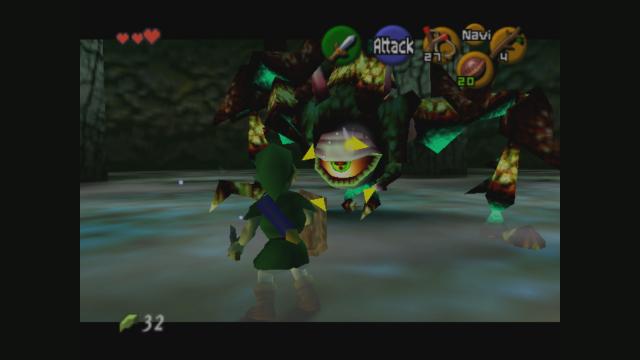
As good as it is, combat is but one part of the Ocarina trifecta; the other two, exploration and problem-solving, are equally important. Exploration is, in general, a joy. Is there a more intoxicating moment in all of The Legend of Zelda than stepping out into Hyrule Field and observing its vastness for the first time? Like all great Zelda titles, Ocarina dares you to peek into every cave, climb every mountain, and turn over every stone. It's not shy about rewarding you for your efforts, either. In the far corners of Hyrule, hidden under boulders, behind waterfalls, and in soft soil patches are a cornucopia of secrets — heart pieces, magical upgrades, gold Skulltulas, and even talking cows.
Problem-solving is also, in general, a triumph, whether situational puzzle-solving within the game's vast, ingenious, multi-level dungeons or item-based puzzling out in the overworld. One of the things that impressed me most during this replay was how some of the overworld puzzles reminded me of the tricky riddles from the LucasArts point-and-click canon. A lot of action-adventure experiences are primarily action with a little bit of adventure. Ocarina feels like a true 50-50 split.
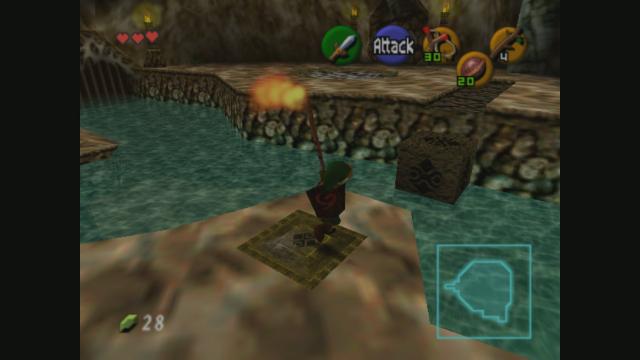
While exploration and problem-solving are mostly great, it's in these areas where a few cracks started to appear during this replay. There are moments, just like the great LucasArts games of old, where the solution to certain riddles can be just a little too obtuse. Furthermore, if you're going for 100% completion, you're bound to experience some degree of tedium. Part of this has to do with the game's inclusion of both a day-night cycle and a time-traveling mechanic that allows you to jump forward and backward through time seven years. That means you can explore the past during the day and night and the future during the day and night. It's just a lot of different variables and it can get monotonous.
Despite some monotony, I'm loath to criticize time travel — it serves the game's nostalgic storyline exceedingly well and it's deployed to great effect in the final two dungeons.
What isn't deployed to great effect in Ocarina of Time is stealth. Now, the first stealth sequence, a covert infiltration of Hyrule Castle, is short enough to be inoffensive. The second one, however, isn't so lucky. It's a rather long segment in Gerudo Fortress that relies heavily on trial-and-error. And if you screw up it's back to the beginning for you. It's a rare mistake in a game filled mostly with triumphs.
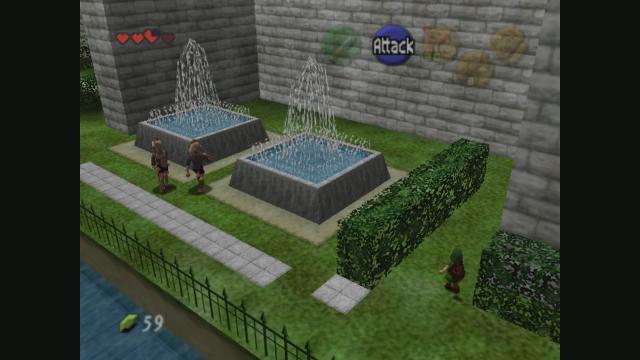
One of those triumphs is the overall visual landscape of Ocarina. Sure, there are some blurry textures and low-polygon assets here and there — a product of the time — but there are also impressively long draw distances, screen-filling bosses, expressive character faces, and a host of mesmerizing environmental moments. These include the Kakariko Village Graveyard in the driving rain, Lake Hylia at sunrise, and the Great Fairy Fountains with their shimmering, translucent waterfalls. Ocarina is the ideal example of a title that makes up for some technological shortcomings with a perfectly-realized game world. Even its infamous 20 FPS frame rate isn't a problem, at least for me.
Is Ocarina of Time as legendary as I remembered it? For the most part, yes. In spite of a handful of missteps — a few obtuse puzzles, some tedious backtracking, and a clunky stealth sequence — I don't believe the last 23 years have been unkind to it. Ocarina remains a brilliant example of the medium, a landmark game that shaped the future of its own franchise and 3D gaming in general. After more than two decades it retains its inventive dungeon design, challenging puzzles, dynamic combat, wistful storyline, unforgettable music, and empowering open-air freedom. I feel confident calling it one of the greatest games of the fifth generation, even if I'm no longer prepared to list it among the five best games ever made.
Updated Ranking:
1. The Legend of Zelda: A Link to the Past
2. The Legend of Zelda: Ocarina of Time
3. The Legend of Zelda
4. The Legend of Zelda: Link's Awakening DX
5. Zelda II: The Adventure of Link
More Articles
Man, thanks for mentioning Nintendo Power's 100th issue! That one's actually one of my favorite gaming mags/issues. 100 codes (remember those?), 100 records, 100 previews, a ranking of the 100 "best games", 100 like everything. It felt monumental back then. :-D Even an expanded Player's Pulse (letters) section. It was like NP, but Texas-sized. But only for one issue!
Anyway...I think I basically share this opinion. I mean today I'd still give this game a glowing review. There are a good number of Nintendo 64 games I consider good (especially by the standards of their time), but there's always remained a distinct top three for that system in my mind over the years:
1) Perfect Dark
2) The Legend of Zelda: Ocarina of Time
3) Conker's Bad Fur Day (yes)
Ocarina of Time stands out here as the one that was actually made by Nintendo and is their greatest masterpiece for the system as far as I'm concerned. It's heavily influenced so many other games too, including more than one of my most cherished (need I mention Okami?).
Favorite part? Probably the Spirit Temple. The entire time-hopping premise of it was pure genius, as were the story aspects integrated therein, the background music and general atmosphere, the puzzles, the fight with Twinrova, and maybe it's just me but I think the Mirror Shield is just a particularly awesome (and even more awesome-looking!) item in Link's collection.
Having completely memorized this game, these days I like to play through collecting everything as early as possible rather than in the most efficient order possible because I can. But what I really like doing most of all (outside of playing through the Spirit Temple) for whatever reason is just hanging out on the Kakariko Village rooftops at night with the full moon out. Just hangin' out with that dude who's trapped on that one roof next to the watch tower. (If you want to get there as a kid, btw, just side jump from the top-left corner of the watch tower. You'll land square on the fence in front of that roof. So ya know! Can get the heart piece from the rooftop guy early that way too. Fun facts!) I find it the most peaceful thing in the world. Simple pleasures the game affords like that.
Yeah, the 100th issue is one of my all-time favorites! There was a special section on GoldenEye ambush spots, too.
Spirit Temple is great. And the battle with Twinrova is definitely a highlight. The biggest surprise for me during this replay, dungeon wise, was Dodongo's Cavern. I really loved it.
Completing Dodongo's Cavern always makes me feel like a real man. ;-)
I'm not sure if we can be friends anymore after that final sentence. ;-)
Nah I'm kidding. Seriously though, fun read, and really, the lead up to release you experience for this particular game is so relatable! I experienced pretty much the same things, and the same hype. But I'm sure you know that. Anyway, thanks for the write-up! :-)
I'm glad you enjoyed the article! While Ocarina fell slightly in my overall ranking, I can't think of a game that means more to me on an emotional level. I imagine it will always be my personal favorite :)
I did! I'm eagerly awaiting Majora's Mask now, but take your time. :-)
The game's core story is quite simple, being composed mostly of a string of damsel-in-distress scenarios (5 out of the 7 sages being female). It's not the unoriginal premise that works, it's the delivery. It's the little moments like when you meet Saria on the bridge on your way out of Kokiri Forest for the first time, the revelation of who Sheik really is, stuff like this that was especially surprising in 1998 and stands the test of time quite well. It's also the day/night cycle, the sound of birds chirping, bugs crawling on the ground when you toss a rock or cut down some tall grass, fire crackling in rooms lit by torches, the way the lighting on the walls in Great Fairy fountains, underground and in watery places like Zora's Domain makes the entire area seem alive; the little details that most games back then left out. It's the opportunity to see how people and places change and evolve (or not) over time. And you get a horse! :-) These were the sorts of things that made Ocarina of Time extra special to me. It raised my hopes and expectations for this entire medium.
There are games I connect to more (especially at this point) personally, but the level of freedom and detail, the music, the lore, the little moments between the characters, these things still make Ocarina of Time a special game even today, I think.
"I consider the best video game franchise": agreed.
Objectively speaking, it isn't the best Zelda game of all time but it's definitely the one I have the most nostalgia for.
It's easily the best game from the last century imo.
To each their own. I used to think it was the best in the series but my opinion has changed over time.








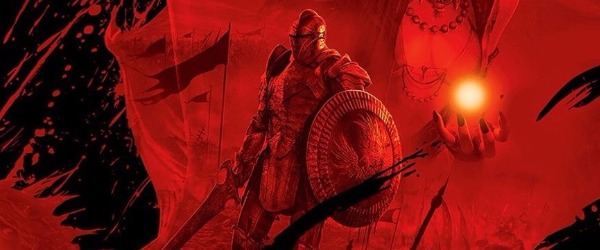
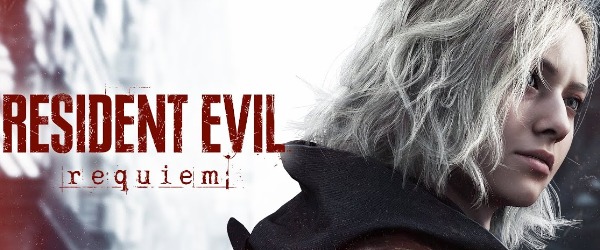
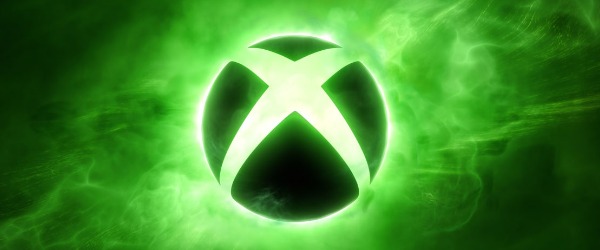
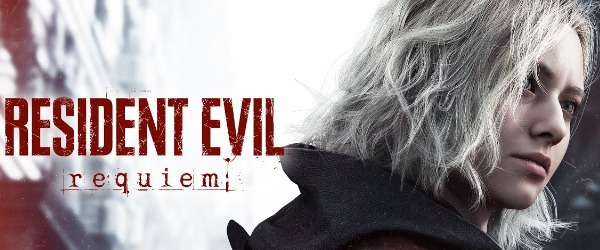










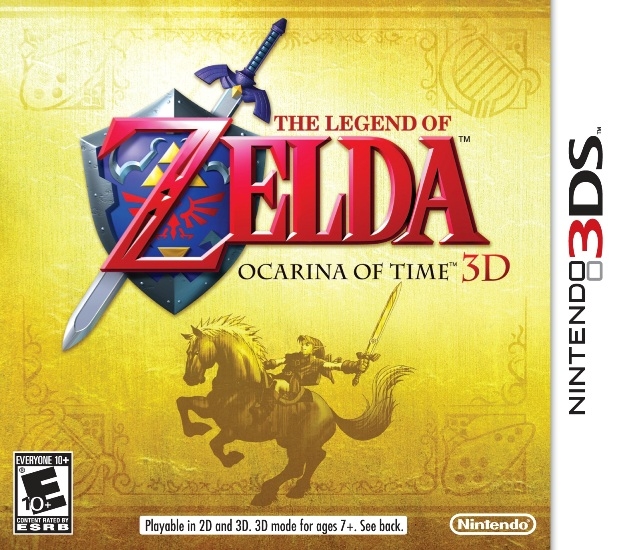

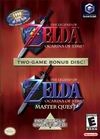

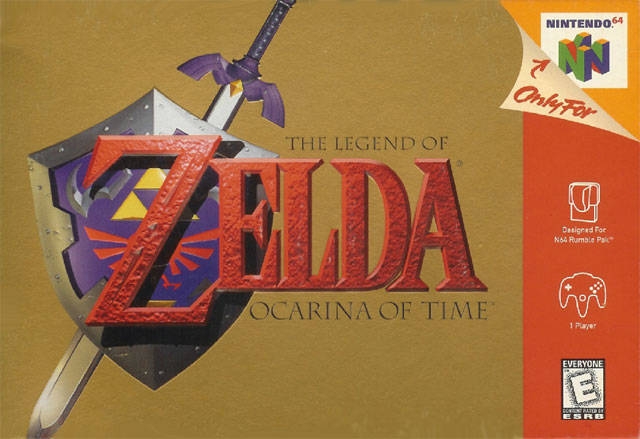

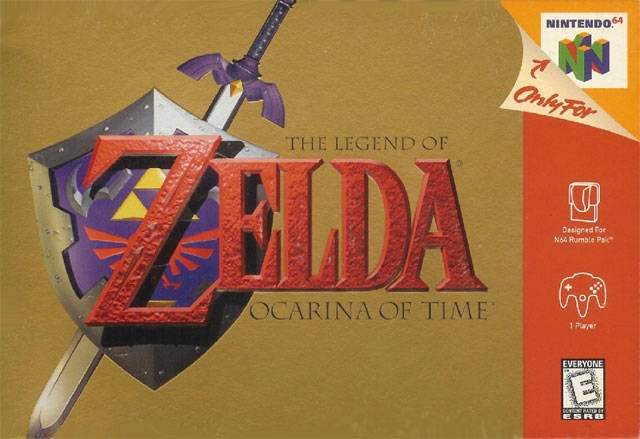

 Essay Pro
Essay Pro